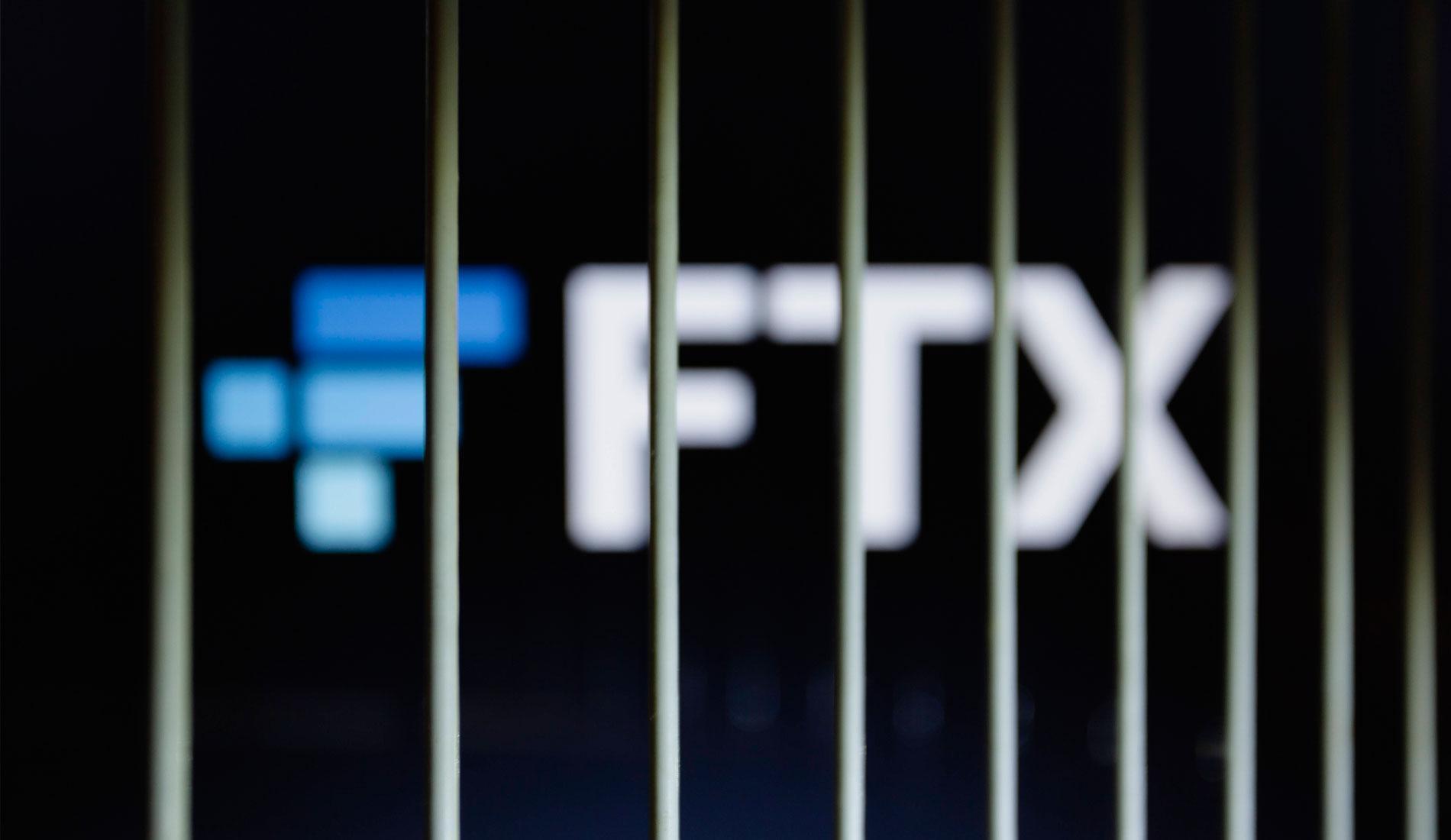Sam Bankman-Fried, the founder of the now-defunct FTX crypto exchange and former darling of MSM, the liberal elite and Democrat politicians, was arrested in the Bahamas on multiple felony charges including fraud and conspiracy by misusing customer funds . The timing of the arrest, a day before SBF was scheduled to testify before a Congressional Committee, has not gone unnoticed. Are Democrats, who have received over USD 100 million in campaign donations, trying to stop SBF from testifying? Where did all the billions go? FTX creditors and the American public have a right to know.
Murat Gibadyuko, 28 December 2022
“Sam Bankman-Fried built a house of cards on a foundation of deception while telling investors that it was one of the safest buildings in crypto.”(SEC Chair Gary Gensler) Bankman-Fried (SBF) is accused by the U.S. Securities and Exchange Commission (SEC) of breaking the antifraud provisions of the Securities Act of 1933 and the Securities Exchange Act of 1934. After returning on a flight from the Bahamas on 21 December, he was released on a ‘no cash up front’ bail. His parents put up a USD 250 million bail bond that was secured by his parents’ five-bedroom home in Palo Alto (worth USD 4 million) and two further signatories whose identity is unkown. Sam Bankman-Fried faces up to 115 years in prison. SBF has gone from hero to zero.
The FTX scandal has been compared to the collapse of Lehman Brothers, which started the 2008 mortgage crisis in the US and the “Great Recession”. Binance CEO Changpeng Zhao said that no one is likely to benefit from FTX’s collapse. In an internal memo to employees, he wrote that the entire decentralized finance industry has been hit and now regulators around the world will tighten the game for cryptocurrency companies.
How did SBF manage to build this house of cards and deceive the SEC, top analysts, politicians and the MSM for so long? Where did all the billions go? And why has the SEC not regulated crypto currencies and their exchanges?
In early November 2022, journalists from CoinDesk published an article analyzing the assets of FTX, the third largest cryptocurrency exchange. According to their report, 90% of the capital of the trading company Alameda, owned by FTX exchange owner Sam Bankman-Fried, was in FTT tokens issued by FTX. Former FTX CEO Sam Bankman-Fried had secretly used customer funds to bail out his FTX subsidiary, leaving an estimated $10 billion hole in the FTX exchange’s books.
In October 2021, 29-year-old Sam Bankman-Fried became the youngest member of Forbes’ ranking of the 400 richest Americans. The young billionaire made his fortune through a series of strategic cryptocurrency investments, first as a trader on Wall Street and then as the founder and CEO of the cryptocurrency exchange FTX. Cryptocurrencies piqued his interest in 2017, when bitcoin surged from USD 2500 to nearly USD 20 000 per token in just six months. SBF saw an opportunity to buy bitcoin in the United States and sell it for 30% more in Japan. By the end of the year, he had saved a million dollars, quit his job, and borrowed another million from his family and friends. With that capital, he established Alameda Research, a quantitative trading firm that created business strategies via mathematical analyses.
In 2019, he raised USD 8 million from several venture capital firms in order to launch FTX, his own cryptocurrency exchange. FTX began operations in WeWork, a Hong Kong co-working space, with only a dozen employees. The new exchange grew so quickly that in July 2021 it was valued at USD 18 billion. In September 2019 SBF relocated the company’s headquarters to the Bahamas owing to its favorable regulatory framework. Laudations from Shark Tank’s Kevin O’Leary and Jim Cramer, comparing Bankman-Fried to JP Morgan, also contributed to the credibility of the exchange.
In 2021, FTX earned USD 750 million in near-risk-free revenue and USD 350 million in profits, while Alameda Research earned USD 1 billion in 2020. Meanwhile, Bankman-Fried was spending FTX depositors’ money on secret venture capital investments, luxury real estate purchases and large political donations, primarily to the US Democratic party.
According to an August 2022 Politico article, SBF was “one of just a handful of donors who spent USD 10 million-plus backing President Joe Biden in 2020”. SBF also hired a network of political operatives and spent USD 36 million more to influence Democratic House primaries in 2022. He was the second largest contributor to Democrats during the 2022 US midterms after George Soros. NBC reported on December 16 that most of the candidates who received direct campaign contributions from Sam Bankman-Fried, almost all of whom were Democrats, stated that they intended to donate the funds.
Some reports have also found a link between SBF’s donations to Ukraine and the Democratic party, claiming that the platform was used to launder money to the latter via funds for the war effort. The timing of SBF’s arrest in the Bahamas, a day before he was scheduled to testify before Congress, raises the question: are Democrats and/or the SEC trying to stop him from testifying under oath before the Congressional Committee?
Bankman-Fried concealed his fraudulent actions for months, leaving investors, clients, and even his employees in the dark, until FTX declared bankruptcy on 11 November 2022. After perhaps the most stunning fraud in cryptocurrency history, the victims of his monumental scam – one million creditors – are the ones who suffered the most. Their money has not been recovered.
During its heyday, FTX attracted huge investments from some of the world’s best-known and best-funded venture capital firms. In July 2021, the exchange raised USD 900 million at a valuation of USD 18 billion from more than 60 investors, including crypto heavyweights such as Coinbase Ventures, Sequoia Capital, Paradigm, and others. Many of these investors also increased their investment in FTX during its last funding round in January 2022, when the company was valued at an incredible USD 32 billion. According to Crunchbase, a provider of business information about private and public companies, FTX sold about USD 1.8 billion worth of stock in three years. Now that the company is bankrupt and owes creditors billions, FTX stock is practically worthless.
At the time of the collapse, FTX’s three largest shareholders were Sequoia Capital with 1.1% and Temasek and Paradigm, each with 1%. In total, these three venture capital firms invested USD 625 million in FTX. In addition, many of the venture capital firms that invested in FTX also used its services to hold cash and crypto assets. However, few of these firms have publicly disclosed their additional FTX positions. On 9 November 2022, Galaxy Digital CEO Mike Novogratz told CNBC that his firm had USD 76.8 million in cash and digital assets deposited in FTX at the time of its collapse, although he said that at that moment his firm was already in the process of withdrawing USD 47.5 million.
It is difficult to estimate the exact amount of customer funds lost by FTX as reports vary, but the figure is likely to be in the billions. The former FTX CEO assured users that assets held on the exchange were fully secured at a 1:1 ratio, discouraging people from withdrawing funds. Those tweets turned out to be outright lies and were deleted in the run-up to FTX’s bankruptcy.
While venture capitalists and projects backed by FTX suffered from Sam Bankman-Fried’s multi-year scam, ultimately the average investor is the biggest loser in the whole disaster. Many FTX users lost all their savings, believing the exchange was safe. Industry critics are pointing to FTX’s preferential treatment by the SEC and its Chairman. Since the collapse of FTX, the role of regulators has come under scrutiny because of Sam Bankman Fried’s close ties to politicians and the SEC Chairman Gary Gensler, with whom SBF had several in person meetings.
The fall of FTX has raised many questions regarding the lack of oversight by the SEC which failed to protect investors from losing large amounts of money. It will be crucial for regulators and lawmakers to address the regulatory and oversight failures and to improve the stability of the cryptocurrency ecosystem in the future. Once the GOP take control of the Houe of Representatives in January 2023, the role and relationship of Chairman Gensler with SBF and FTX’s ties to the Democrat party will likely be one of the many items to be investigated.







